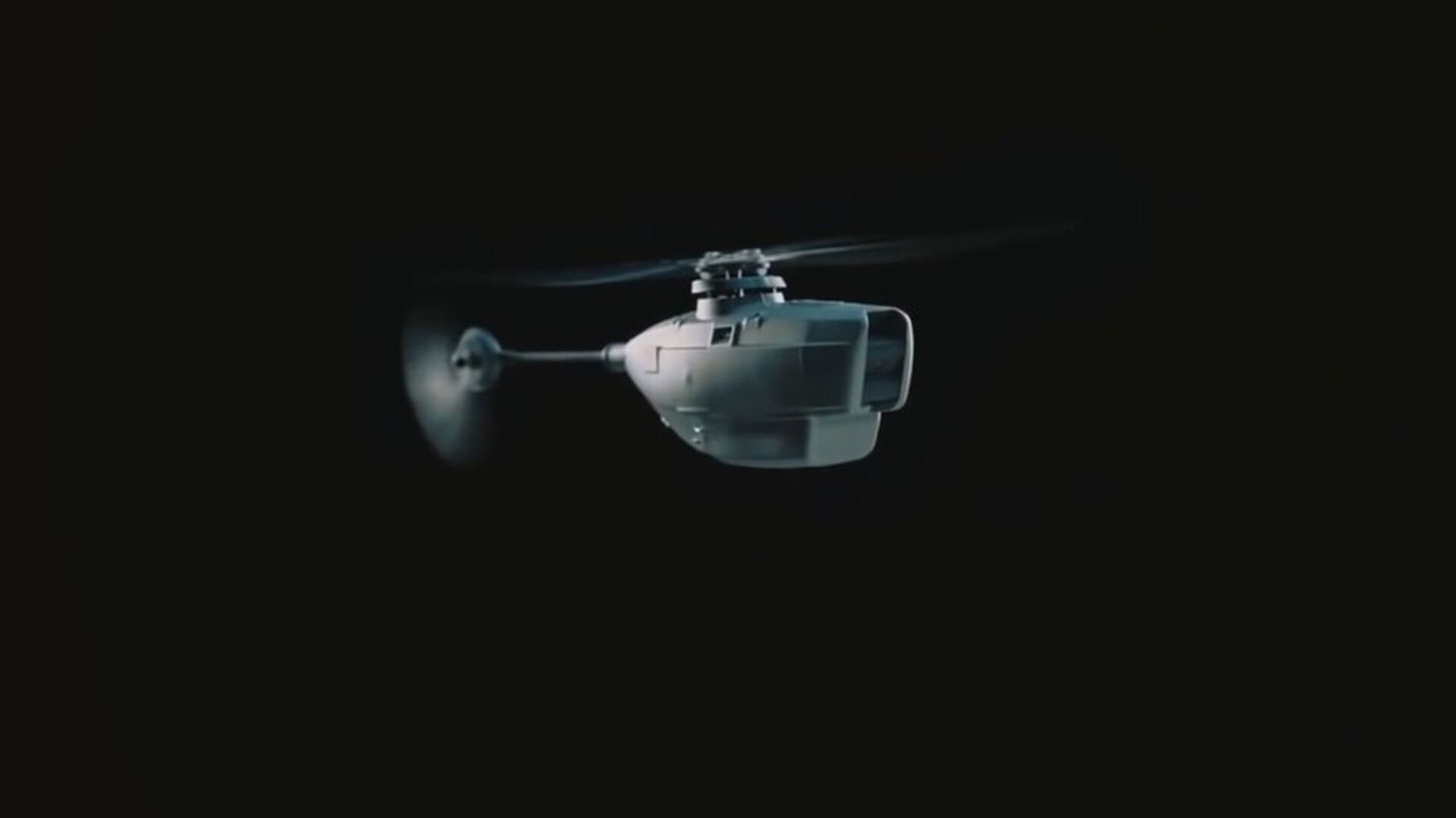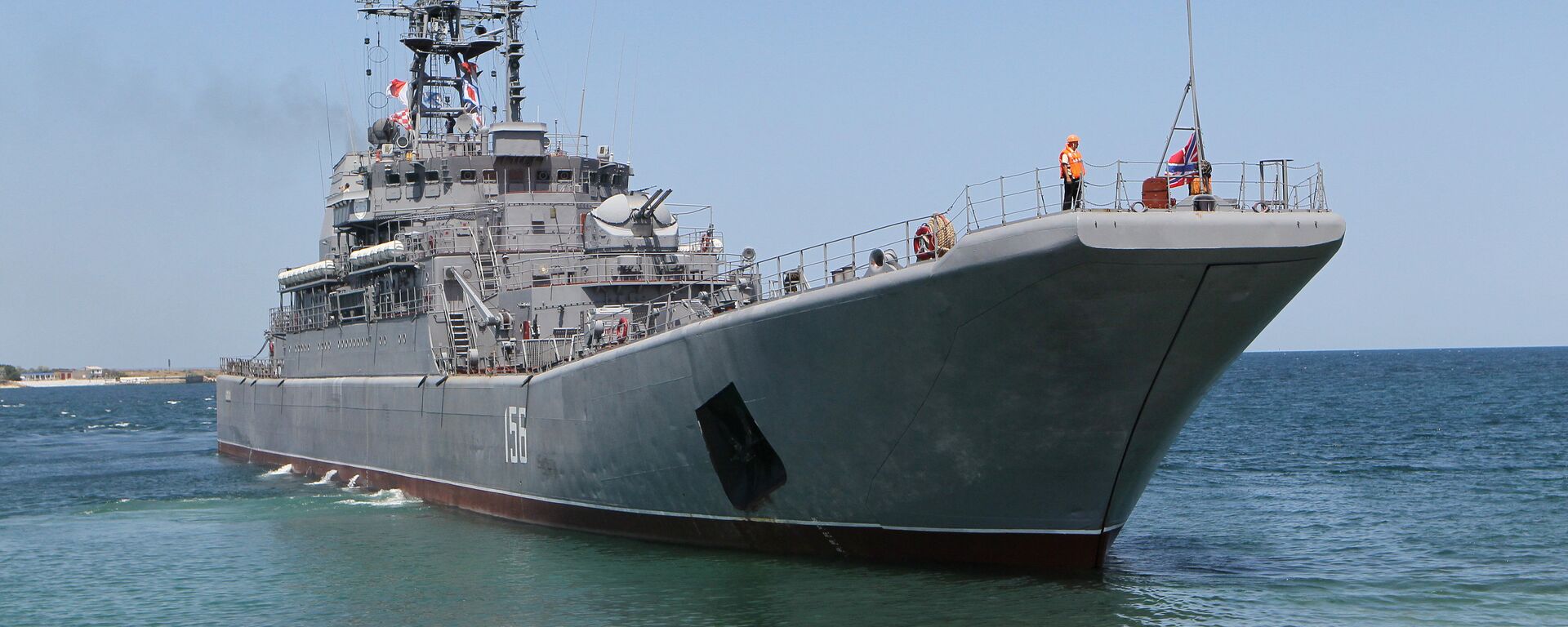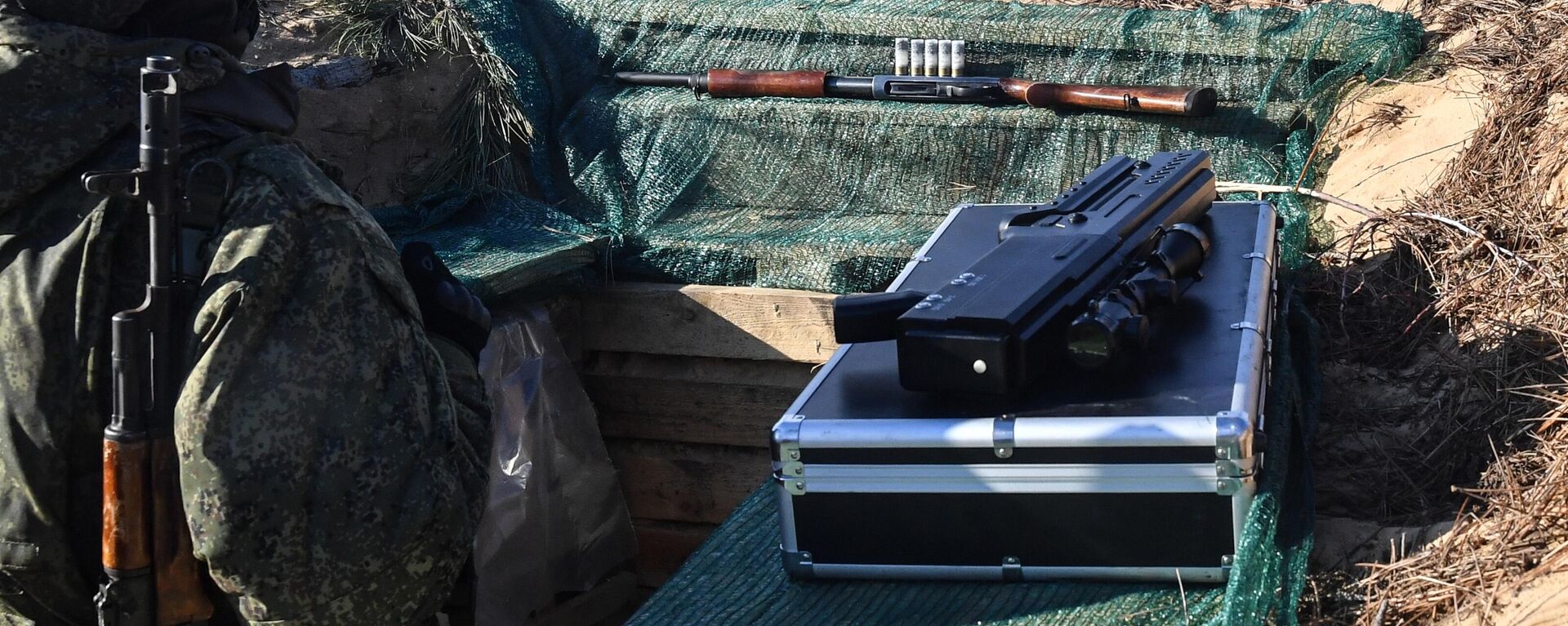https://sputnikglobe.com/20230725/what-are-black-hornet-nano-drones-and-why-is-us-sending-them-to-ukraine-1112133688.html
What Are Black Hornet Nano Drones and Why is US Sending Them to Ukraine?
What Are Black Hornet Nano Drones and Why is US Sending Them to Ukraine?
Sputnik International
US officials have announced another military aid package for Ukraine, this time including a batch of tiny Black Hornet reconnaissance drones. What exactly are Black Hornets? Who makes them? And why are they so expensive?
2023-07-25T15:02+0000
2023-07-25T15:02+0000
2023-07-25T18:34+0000
united kingdom (uk)
ukraine
russia
nato
norwegian
prox dynamics
black hornet
black hornet nano
sputnik explains
https://cdn1.img.sputnikglobe.com/img/104407/38/1044073838_0:11:975:559_1920x0_80_0_0_33a09cddb0eac2a73652dc3d621fa66b.jpg
US officials have spent nearly a week touting a new $400 million weapons package for Kiev to assist in NATO’s ongoing proxy war against Russia, with the weapons, taken directly from the Pentagon’s own stocks, including NASAMS, Stinger and Patriot air defense missiles, Stryker armored vehicles, TOW and Javelin anti-tank missiles, howitzer ammo, HIMARS rockets and 28 million rounds of small arms ammunition.On Monday, anonymous officials revealed to media that the arms package will also include Black Hornet Nanos, a pricy, sophisticated unmanned aerial vehicle about the size of a small bird.What are Black Hornet Drones Used For?Black Hornet Nanos are a micro UAV weighing in at just 17-18 grams. They can be carried around by troops and deployed to provide hi-res images and video of the surrounding environment using three separate onboard cameras. The drones resemble a tiny helicopter, are about 100 mm long and 25 mm wide, with their main rotor blade’s diameter measuring in at about 120 mm.Who Makes Black Hornet Drones?Black Hornets were developed by Norwegian nano drone helicopter startup Prox Dynamics in the early 2010s, and are now manufactured by FLIR Unmanned Aerial Systems, another Norwegian company, which bought out Prox Dynamics in 2016 for $134 million. FLIR specializes in surveillance and automated systems, equipment for armored vehicles, traffic detection systems, and firefighting cameras.What is the Black Hornet’s Range and How Fast Do They Fly?Black Hornets have a flight time of up to 25 minutes, are equipped with a digital data-link effective to ranges up to 1.6 km, and have a top speed of 21 km per hour.How Much do Black Hornets Cost, and Why are They So Expensive?Black Hornet drones had an estimated price tag of about $195,000. That figure is based on a 2013 contract by the UK’s Defense Ministry on the purchase of 160 Black Hornet sets (320 micro copters total) for the equivalent of $31 million. For 195k, you get a remote control, handheld touch screen, rechargeable battery pack, and a two-in-a-set pack of mini drones stored in a special portable, wearable bump resistant container.Where Have Black Hornets Been Deployed?Over 14,000 Black Hornets have been produced since their debut in 2011, with the drones purchased en masse by the Norwegian and NATO militaries, as well as by Algeria, Australia, India, Indonesia, Malaysia, New Zealand, and South Africa for military and police use.The systems’ first combat deployment was reported in 2013, with the systems used by British troops during NATO’s occupation of Afghanistan. The US began using modified versions of the base drone equipped with night vision and improved navigation in 2015, reporting their deployment with Marine Corps Special Operations units; the US Army followed up with a $140 million contract for its Soldier Borne Sensor (SBS) program.The US is not the first country to equip Ukraine with Black Hornets. In August 2022, the UK and Norway jointly purchased 850 Black Hornet Nanos, promising to deploy them by November of that year. Earlier this month, the Norwegian Defense Ministry announced that FLIR would supply another 1,000 Black Hornets, plus spare parts, and would train Ukrainian operators and instructors to fly them (a process which reportedly takes as little as 20 minutes).Are Black Hornets the Smallest Military Drones in the World?Black Hornets are touted as the smallest military drones in the world. UK Defense Media hinted back in late 2015 that the military was considering experiments using even smaller UAVs weighing as little as 5 grams, but additional information on these plans has yet to materialize.Last year, a Chinese company known as Huaqing Innovation unveiled the Fengniao (lit. ‘Hummingbird’) drone at a defense expo in Abu Dhabi, with the UAV measuring in at 170 mm long and weighing 35 grams, and capable of transmitting snapshots or real-time footage at distances of more than 2 km. It has a reported flight time of about 25 minutes, and is powered by replaceable batteries, rather than a battery pack like the Black Hornet. The Fengniao can reportedly be used in combination with up to 15 other drones of the same type to form a swarm, and controlled by a smart phone app. Huaqing Innovation has not revealed the drone’s likely price tag.For the more budget-conscious buyers, there are commercially available helicopter-style drones fitted with cameras (which have already been used en masse in Ukraine), such as the Eachine E110 RC, which features a 720 pm HD camera with 90 degree rotatable lens.These drones can be yours for as little as $95, meaning, in theory, that one can buy over 1,000 of the mass-market drones for the price of a single Black Hornet. But there are many tradeoffs, including a flight time of just 15 minutes, a 20 km per hour flight speed, and crucially, a transmission distance of just 50-120 meters. Eachines are equipped with automatic hover and stare modes, and user-selectable waypoint controls, and an automatic return feature. The drones are also substantially larger than Black Hornets, with a nose to tail length of about 30 cm and a similar rotor span. However, as the saying goes, in some circumstances quantity has a quality all its own.What Weapons Can Be Used to Counter Black Hornet Drones?Black Hornets’ tiny size and quiet operation make them basically impossible to destroy using conventional missile defenses, although small arms (or an aptly thrown bag of groceries) might just be able to do the job at close range.Alternatively, they can be targeted by specially-designed countermeasures, such as the RLK-MTs Valdai, a special-purpose radar designed by Russian missile maker Almaz-Antey to detect, suppress and neutralize small drones with extremely low radar cross sections at close-in ranges of 2 km or less. The RLK-MTs’s detection systems include an X-band radar module, thermal imagers and cameras, and a radio signal source-finder module. But these systems are heavy. Heavy enough that they have to be mounted on a truck.Alternatively, there are military-grade anti-UAV systems such as the PARS-S Stepashka, a 9.6 kg Russian anti-drone gun with the ability to hijack enemy drones and force them to land or return to their launch sites. These weapons have an effective range between 500 and 1,500 meters.And if that doesn’t work, there’s the Stupor rifle, which uses electromagnetic pulses to suppress drones’ control channels and similarly force them down.
https://sputnikglobe.com/20230725/russias-patrol-ship-destroys-2-ukrainian-drone-boats-in-black-sea---defense-ministry-1112127382.html
https://sputnikglobe.com/20230529/what-are-anti-drone-systems-and-how-do-they-work-1110774045.html
united kingdom (uk)
ukraine
russia
Sputnik International
feedback@sputniknews.com
+74956456601
MIA „Rossiya Segodnya“
2023
News
en_EN
Sputnik International
feedback@sputniknews.com
+74956456601
MIA „Rossiya Segodnya“
Sputnik International
feedback@sputniknews.com
+74956456601
MIA „Rossiya Segodnya“
pd 100 drone, black hornet, black hornet drone, black hornet drone price, black hornet nano, black hornet drone range, black hornet nano drone price, black hornet drone ukraine, black hornet military drone, black hornet drone military, micro drone black hornet, why is the black hornet drone so, what can black hornet drone do expensive, black hornet army drone
pd 100 drone, black hornet, black hornet drone, black hornet drone price, black hornet nano, black hornet drone range, black hornet nano drone price, black hornet drone ukraine, black hornet military drone, black hornet drone military, micro drone black hornet, why is the black hornet drone so, what can black hornet drone do expensive, black hornet army drone
What Are Black Hornet Nano Drones and Why is US Sending Them to Ukraine?
15:02 GMT 25.07.2023 (Updated: 18:34 GMT 25.07.2023) American officials have announced another military aid package for Ukraine, this time including a batch of tiny Black Hornet reconnaissance drones. What exactly are Black Hornets? Who makes them? What makes them expensive? And why is the US sending them to Ukraine? Sputnik explores.
US officials have spent nearly a week
touting a new $400 million weapons package for Kiev to assist in NATO’s ongoing proxy war against Russia, with the weapons, taken directly from the Pentagon’s own stocks, including NASAMS, Stinger and Patriot air defense missiles, Stryker armored vehicles, TOW and Javelin anti-tank missiles, howitzer ammo, HIMARS rockets and 28 million rounds of small arms ammunition.
On Monday, anonymous officials revealed to media that the arms package will also
include Black Hornet Nanos, a pricy, sophisticated unmanned aerial vehicle about the size of a small bird.
What are Black Hornet Drones Used For?
Black Hornet Nanos are a micro UAV weighing in at just 17-18 grams. They can be carried around by troops and deployed to provide hi-res images and video of the surrounding environment using three separate onboard cameras. The drones resemble a tiny helicopter, are about 100 mm long and 25 mm wide, with their main rotor blade’s diameter measuring in at about 120 mm.
Who Makes Black Hornet Drones?
Black Hornets were developed by Norwegian nano drone helicopter startup Prox Dynamics in the early 2010s, and are now manufactured by FLIR Unmanned Aerial Systems, another Norwegian company, which bought out Prox Dynamics in 2016 for $134 million. FLIR specializes in surveillance and automated systems, equipment for armored vehicles, traffic detection systems, and firefighting cameras.
What is the Black Hornet’s Range and How Fast Do They Fly?
Black Hornets have a flight time of up to 25 minutes, are equipped with a digital data-link effective to ranges up to 1.6 km, and have a top speed of 21 km per hour.
How Much do Black Hornets Cost, and Why are They So Expensive?
Black Hornet drones had an estimated price tag of about
$195,000. That figure is based on a 2013 contract by the UK’s Defense Ministry on the purchase of 160 Black Hornet sets (320 micro copters total) for the equivalent of $31 million.
For 195k, you get a remote control, handheld touch screen, rechargeable battery pack, and a two-in-a-set pack of mini drones stored in a special portable, wearable bump resistant container.
Where Have Black Hornets Been Deployed?
Over 14,000 Black Hornets have been produced since their debut in 2011, with the drones purchased en masse by the Norwegian and NATO militaries, as well as by Algeria, Australia, India, Indonesia, Malaysia, New Zealand, and South Africa for military and police use.
The systems’
first combat deployment was
reported in 2013, with the systems used by British troops during NATO’s occupation of Afghanistan. The US began using modified versions of the base drone equipped with night vision and improved navigation in 2015,
reporting their deployment with Marine Corps Special Operations units; the US Army followed up with a $140 million contract for its Soldier Borne Sensor (SBS) program.
The US is not the first country to equip Ukraine with Black Hornets. In August 2022, the UK and Norway jointly purchased 850 Black Hornet Nanos, promising to deploy them by November of that year. Earlier this month, the Norwegian Defense Ministry announced that FLIR would supply another 1,000 Black Hornets, plus spare parts, and would train Ukrainian operators and instructors to fly them (a process which reportedly takes as little as 20 minutes).
Are Black Hornets the Smallest Military Drones in the World?
Black Hornets are touted as the smallest military drones in the world. UK Defense Media hinted back in late 2015 that the military was considering experiments using even smaller UAVs weighing
as little as 5 grams, but additional information on these plans has yet to materialize.
Last year, a Chinese company known as Huaqing Innovation
unveiled the
Fengniao (lit. ‘Hummingbird’) drone at a defense expo in Abu Dhabi, with the UAV measuring in at 170 mm long and weighing 35 grams, and capable of transmitting snapshots or real-time footage at distances of more than 2 km. It has a reported flight time of about 25 minutes, and is
powered by replaceable batteries, rather than a battery pack like the Black Hornet. The Fengniao can reportedly be used in combination with up to 15 other drones of the same type
to form a swarm, and controlled by a
smart phone app. Huaqing Innovation has not revealed the drone’s likely price tag.
For the more budget-conscious buyers, there are commercially available helicopter-style drones fitted with cameras (which have already been used en masse in Ukraine), such as the Eachine E110 RC, which features a 720 pm HD camera with 90 degree rotatable lens.
These drones can be yours for as little as $95, meaning, in theory, that one can buy over 1,000 of the mass-market drones for the price of a single Black Hornet. But there are many tradeoffs, including a flight time of just 15 minutes, a 20 km per hour flight speed, and crucially, a transmission distance of just 50-120 meters. Eachines are equipped with automatic hover and stare modes, and user-selectable waypoint controls, and an automatic return feature. The drones are also substantially larger than Black Hornets, with a nose to tail length of about 30 cm and a similar rotor span. However, as the saying goes, in some circumstances quantity has a quality all its own.
What Weapons Can Be Used to Counter Black Hornet Drones?
Black Hornets’ tiny size and
quiet operation make them basically impossible to destroy using conventional missile defenses, although small arms (or an
aptly thrown bag of groceries) might just be able to do the job at close range.
Alternatively, they can be targeted by specially-designed countermeasures,
such as the RLK-MTs Valdai, a special-purpose radar designed by Russian missile maker Almaz-Antey to detect, suppress and neutralize small drones with extremely low radar cross sections at close-in ranges of 2 km or less. The RLK-MTs’s detection systems include an X-band radar module, thermal imagers and cameras, and a radio signal source-finder module. But these systems are heavy. Heavy enough that they have to be mounted on a truck.
Alternatively, there are military-grade anti-UAV systems such as the PARS-S Stepashka, a 9.6 kg Russian anti-drone gun with the ability to hijack enemy drones and force them to land or return to their launch sites. These weapons have an effective range between 500 and 1,500 meters.
And if that doesn’t work, there’s the Stupor rifle, which uses electromagnetic pulses to suppress drones’ control channels and similarly force them down.



